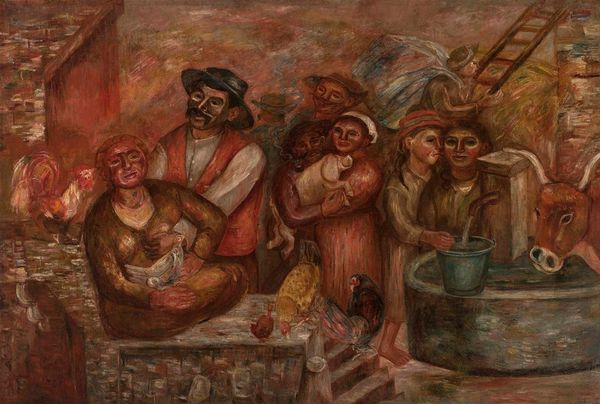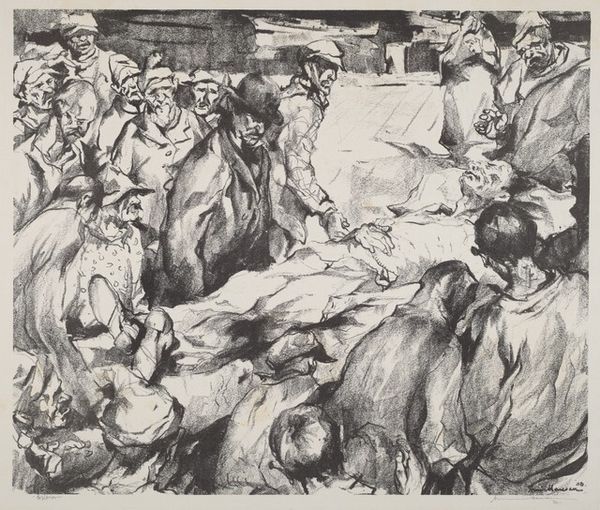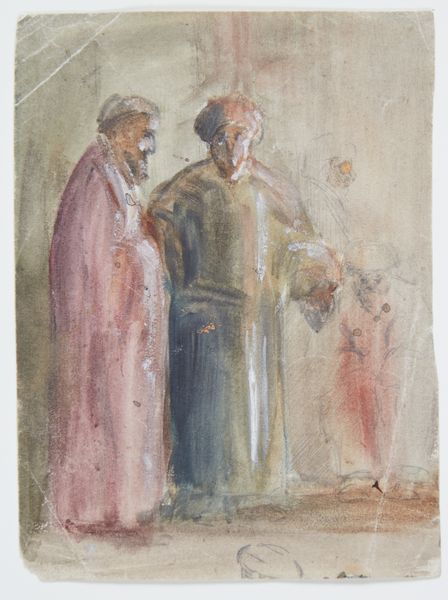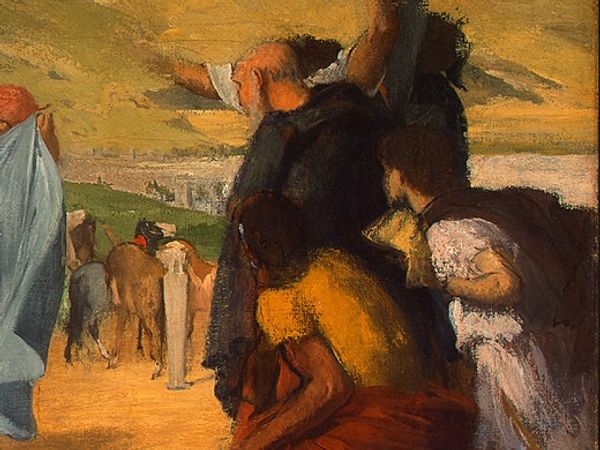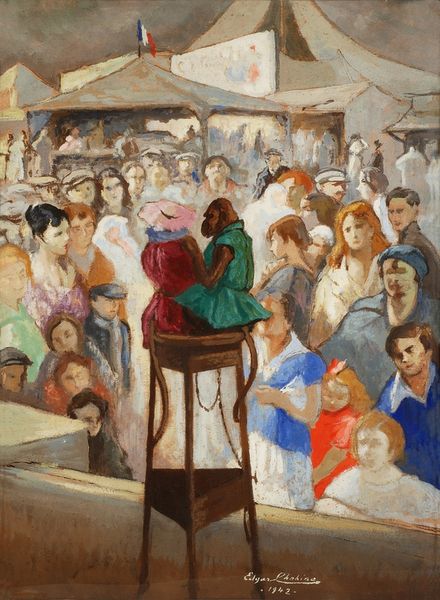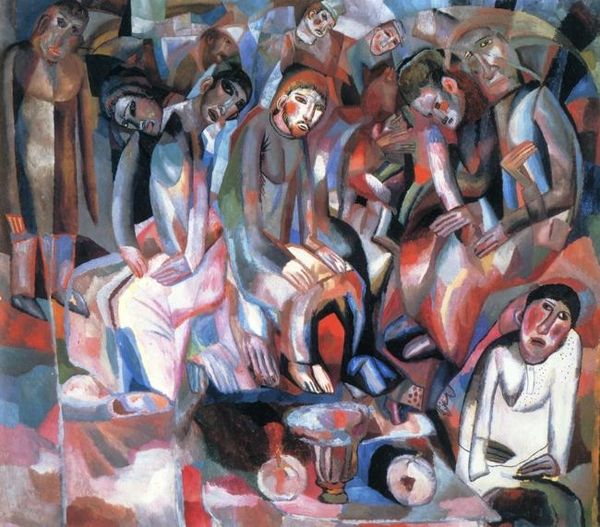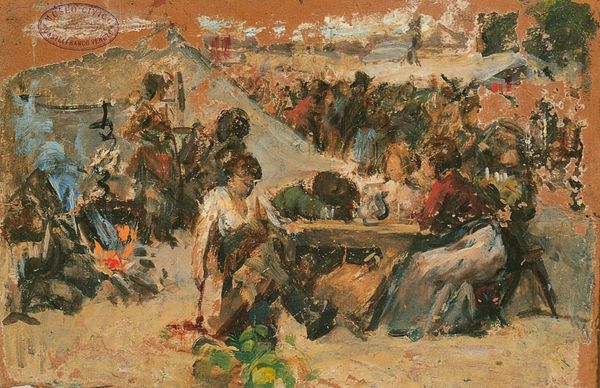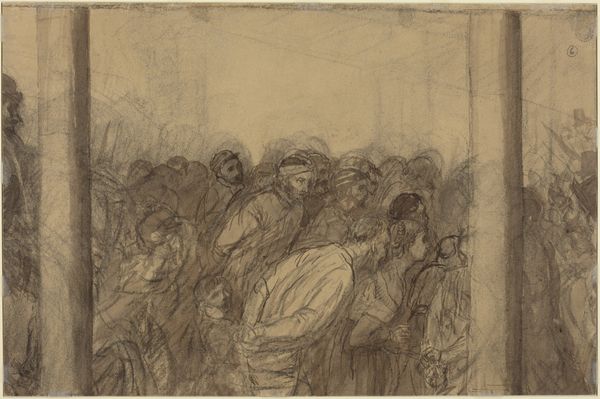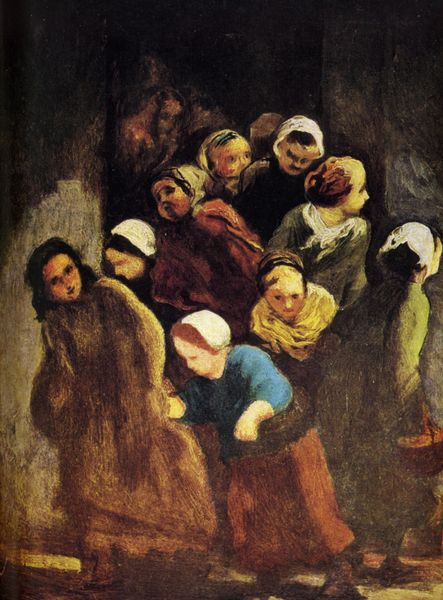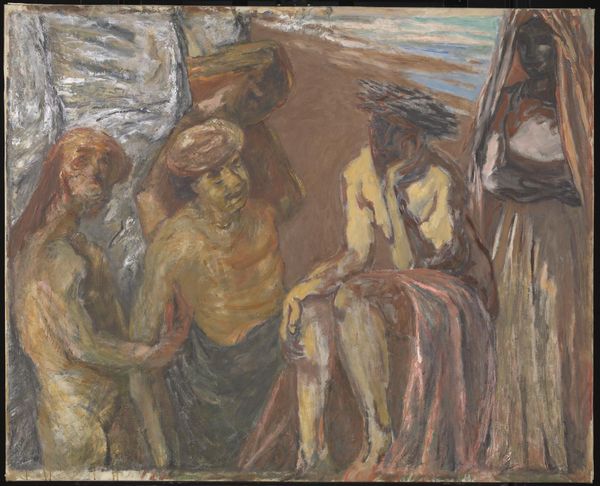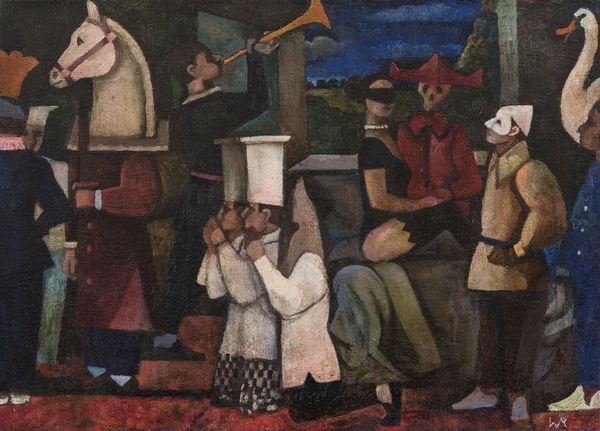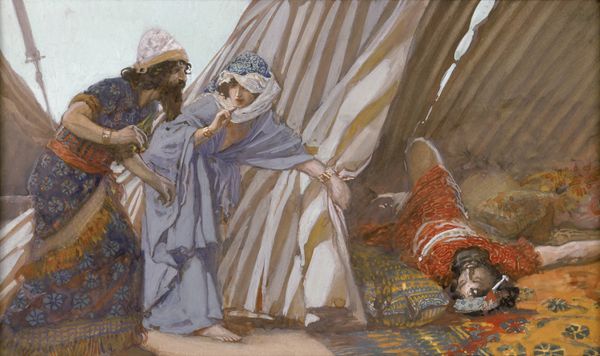
drawing, watercolor
#
drawing
#
charcoal drawing
#
oil painting
#
watercolor
#
watercolour illustration
#
history-painting
#
watercolor
#
realism
Copyright: Public domain
Editor: Here we have John Frederick Lewis’s "Study for the Proclamation of Don Carlos" from 1838, rendered in watercolor and drawing. The scene feels chaotic, almost a riot captured in muted tones. What can you tell me about the material and societal conditions in which it was made? Curator: Let's consider the labor involved here. Lewis uses watercolor, a medium easily transportable, which speaks to the accessibility and speed it offered artists traveling to capture such events. Notice the loose brushwork; this wasn't about polished detail, but about quickly documenting the scene. Does that looseness suggest anything about his social position relative to the event itself? Editor: It gives a sense of immediacy, like a news sketch. The subjects seem to be active and are not directly posing. But in what way are watercolor and drawing, combined here in a 'study', revealing about artistic conventions of the 19th century? Curator: The term "study" is key. It indicates a preparatory piece. So, what implications are there for understanding the role and perceived importance of the 'finished' work versus these preparatory drawings? Did they circulate differently? What determined their value then and now? Was the mass circulation of sketches a means of capitalising from the illustrated press or personal ambition? Editor: It sounds like he intended it for a larger painting or illustration, which maybe elevates the 'finished' work over this, in the artistic hierarchy of the time. And if this was for mass consumption through illustration, how might it have influenced public opinion or the artist's personal success? Curator: Exactly! The piece becomes a commodity. Lewis’s choice of medium, the speed of execution – it’s all interwoven with market demands and his personal economic strategy as an artist. Did this influence your perception of his technical skills or artistic choice? Editor: I initially saw it as just an emotional depiction, but now I realize the materials themselves and how they are used tell us about the art market, and even Lewis’s own career aspirations within that system. Thank you! Curator: It goes to show you, looking at art this way provides a whole other depth.
Comments
No comments
Be the first to comment and join the conversation on the ultimate creative platform.

